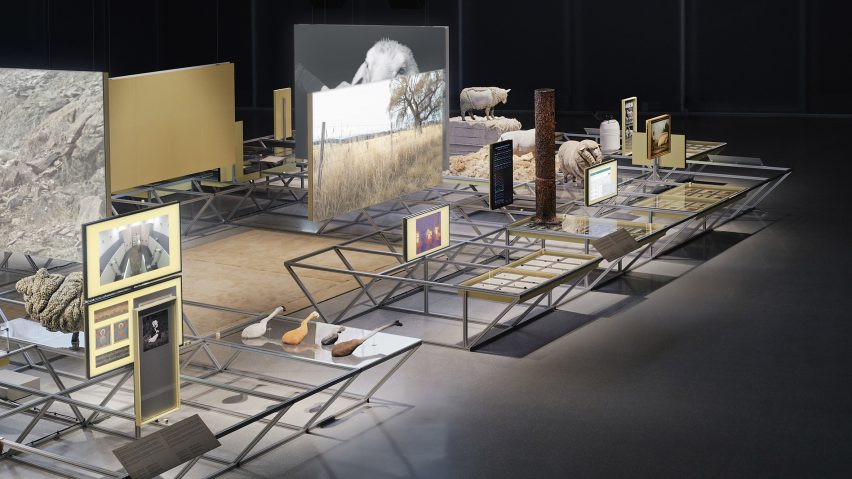
Oltre Terra exhibition calls for "constructive relationship" between humans and sheep
Design duo Formafantasma has unveiled an exhibition at Oslo's National Museum of Norway about the history and future of wool production, featuring a 1,700-year-old tunic and a carpet made from waste fibres.
Andrea Trimarchi and Simone Farresin of Formafantasma created the Oltre Terra exhibition, curated by Hannah Eide, to unravel humanity's past and present relationship with sheep and, by extension, the production of wool.
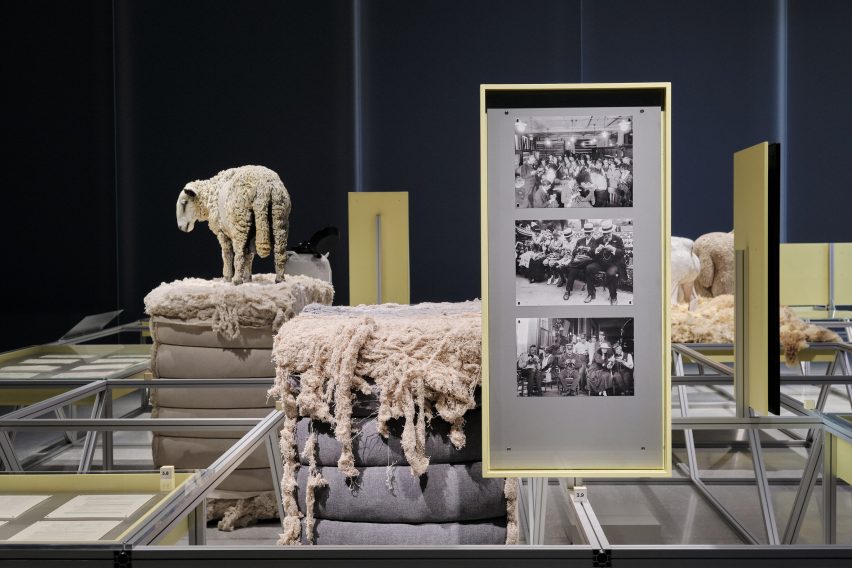
The exhibition features archival and contemporary objects, including life-size replicas of seven different breeds of sheep and tools for shearing, arranged across a diorama-style set within a single gallery at Norway's national museum.
Among the first animals to be domesticated by humans, sheep were first culled by hunter-gatherers around 11,000 years ago.
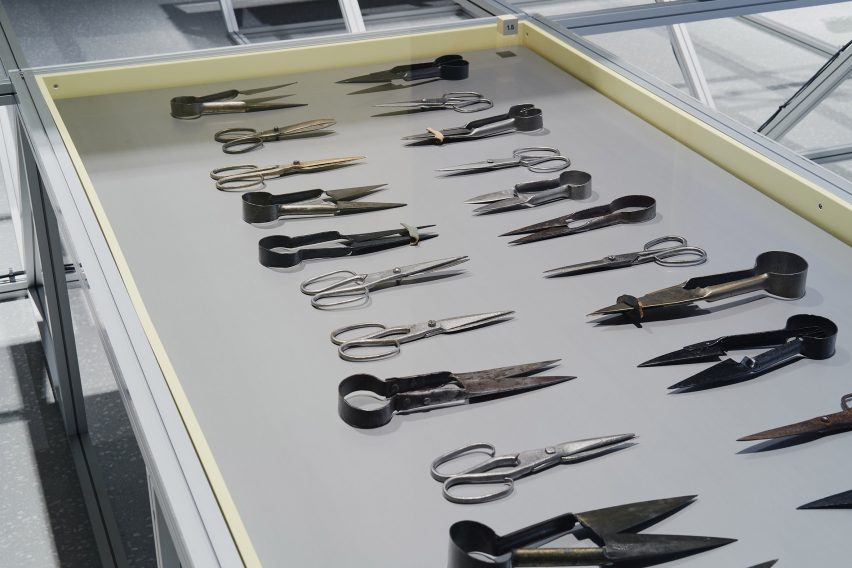
This marked the start of a complex relationship, according to Formafantasma.
"The National Museum of Norway [which commissioned Oltre Terra] was interested in us developing a body of work that relates to the local community in Oslo, because wool was an extremely important material in Norwegian culture before the development of the industry connected to oil and farming," Trimarchi and Farresin told Dezeen.
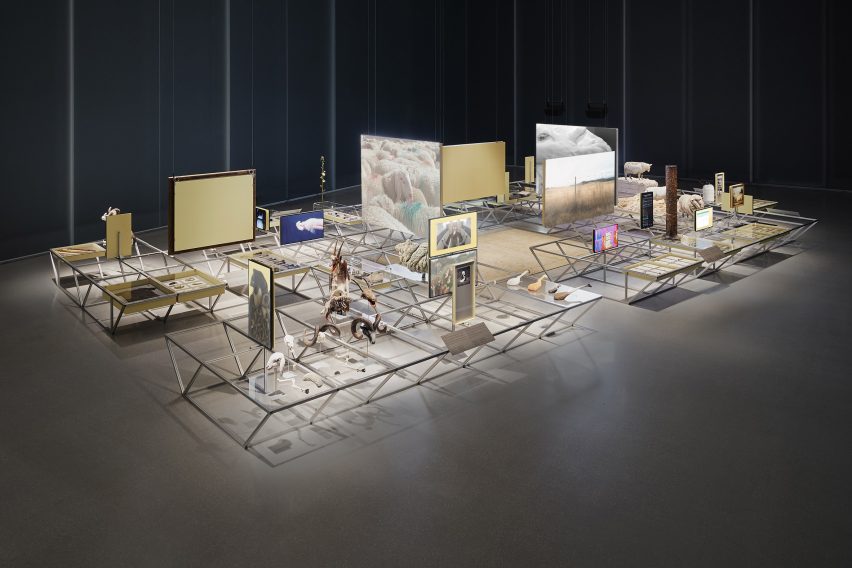
Oltre Terra aimed to combine artefacts typically seen in natural history museums with ones more commonly exhibited at art and design galleries, in order to highlight the interdependency between biological evolution and production processes.
Among the pieces on show are a cream carpet by CC-Tapis made of four different wool fibres extracted from 12 Italian sheep breeds.
This wool was left over from production and would usually be discarded for its coarseness, but the carpet intends to illustrate how these rougher fibres can still be used to make products that are not in direct contact with skin.
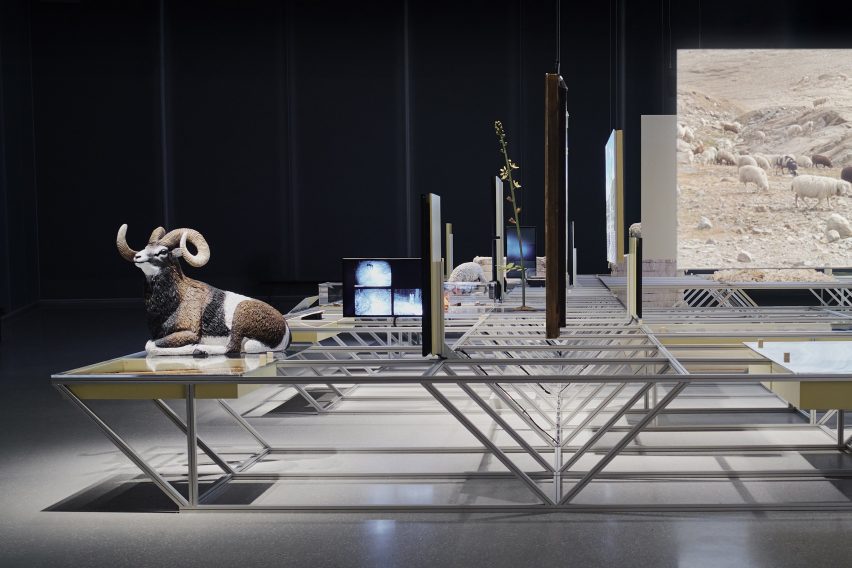
Also on display is a 1,700-year-old woollen tunic, which was found preserved under a mountain ice patch 200 miles northwest of Oslo in 2011, and woollen sails that were used for Viking Age boats.
At the centre of the installation sits a video that Formafantasma created with artist Joanna Piotrowska. Called Tactile Afferents, the film focusses on the sense of touch and explores the ways in which humans have interacted with sheep over time.
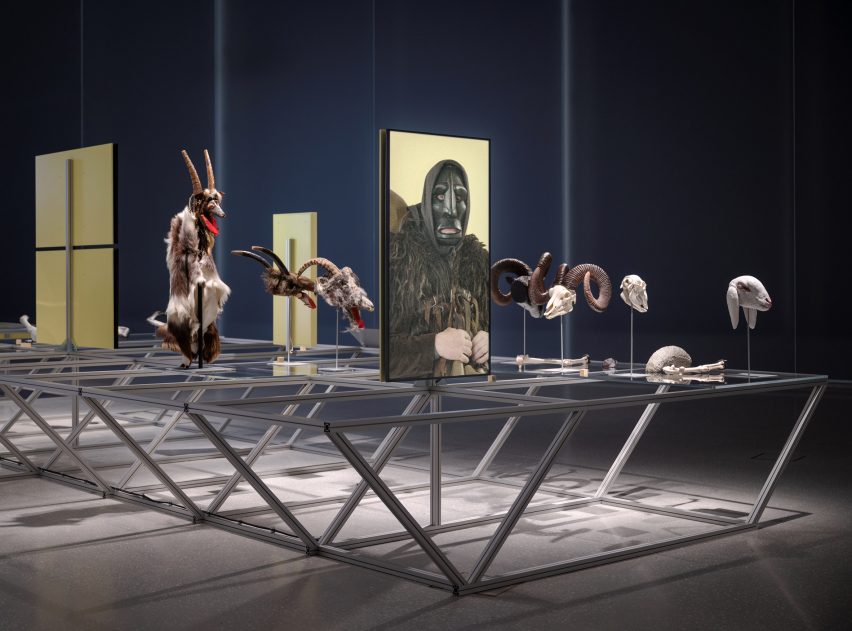
The exhibition also features replicas of notable examples of the species, such as Shrek, the Merino sheep from New Zealand who – like many others – was discovered in the wild with an overgrown coat in 2004 after he escaped his domestic flock six years prior.
This is an example of when sheep need humans, according to Formafantasma.
"Many people are against animal farming, which, when it is intensive farming, we also think is extremely problematic," said the designers.
"But sheep at the moment are not like their wild ancestors, Mouflons – they do not naturally lose hair. They need humans to shear them."
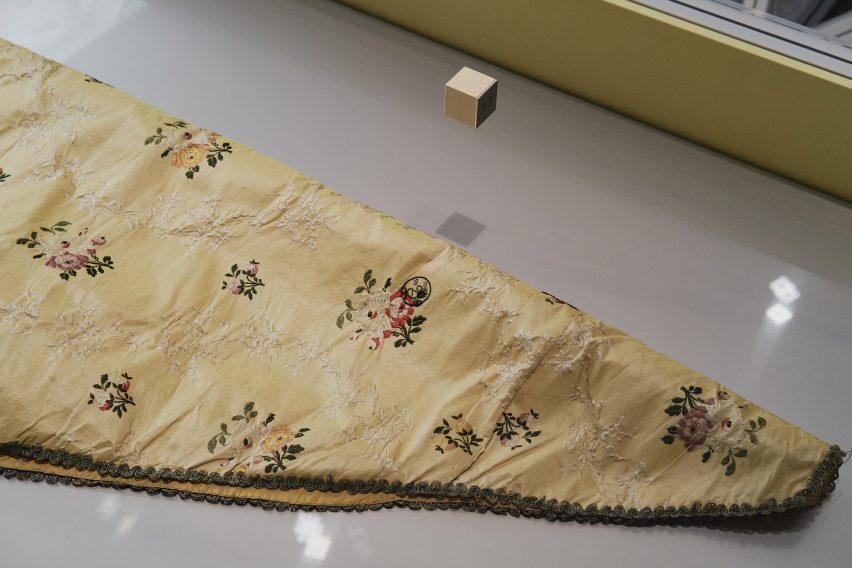
The show's exhibition design nods to the concept of the diorama – miniature or largescale models found in museums that are encased in glass and typically display three-dimensional figures.
For Oltre Terra, the diorama was "exploded" into sections and left open, rather than covered in glass, to allow visitors to feel more connected to the pieces and to question the boundary between art and science.
"For us, it's about unifying narratives and showing how these are complex ecologies that should be displayed together," said Trimarchi and Farresin of the installation.
"The scope of the exhibition is to explore this very intimate yet intricate relationship between humans and animals, in which the boundaries between tamer and domesticated fade," continued the designers.
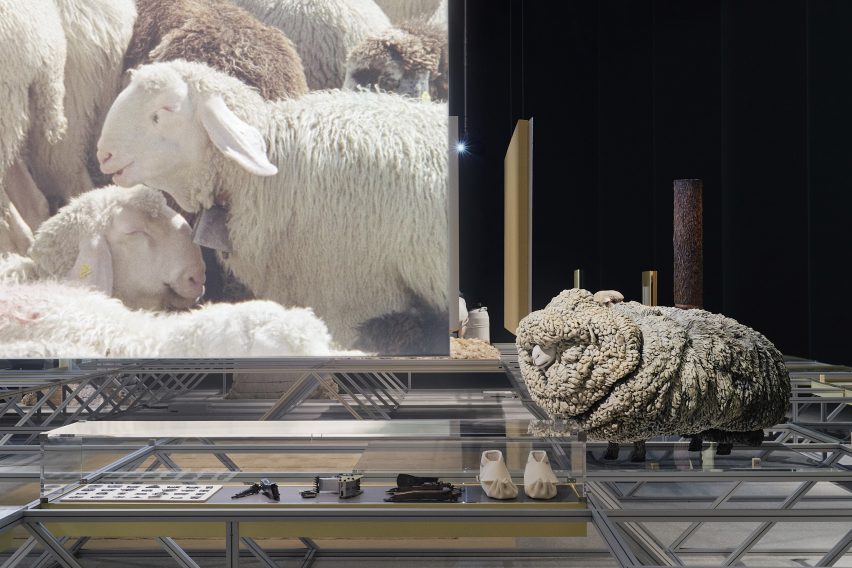
Trimarchi and Farresin explained that one of the exhibition's overarching aims was to promote mutual dependence and respect between humans and sheep, especially when it comes to farming practices.
"The relationship between humans and sheep is much more complicated and complex," they added.
"As with human relationships, there are abusive relationships, and there are just relationships and constructive relationships. What we're doing now [with livestock] is, in some cases, extremely abusive, but this does not mean that sheep and animals and humans cannot live in a process of symbiosis."
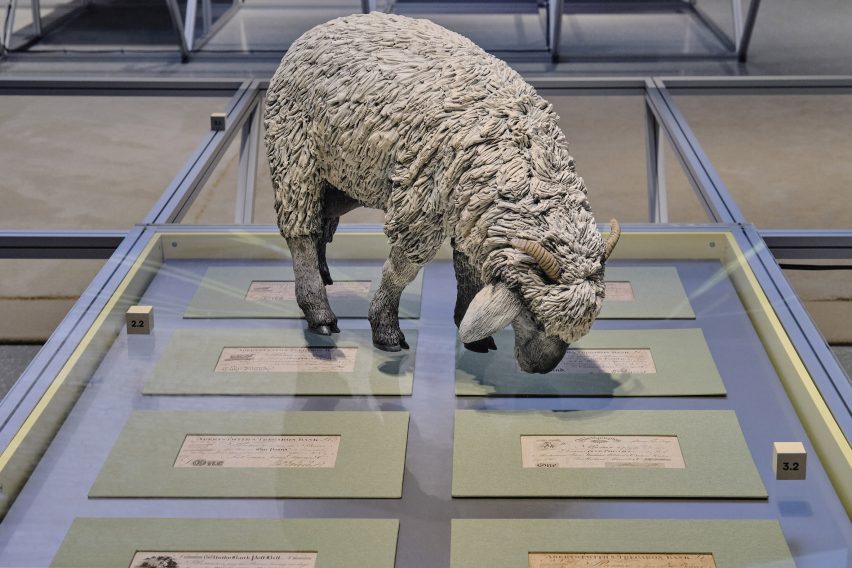
The show took its name from the etymology of the word "transhumance", which is formed by the combination of the Latin words trans (across, 'oltre' in Italian) and humus (grounds, 'terra') and refers to the practice of migrating livestock from one grazing ground to another.
Founded by Trimarchi and Farresin in 2009, Formafantasma has previously presented other shows that investigate materials, including an exhibition on timber with furniture brand Artek that was held at Helsinki's Design Museum last year. The studio also redesigned its website to reduce carbon dioxide emissions.
The photography is by Ina Wesenberg.
Project credits:
Formafantasma team: Sara Barilli, Alessandro Celli and Gregorio Gonella
Curator: Hannah Eide
Oltre Terra is on display at the National Museum of Norway from 26 May to 1 October 2023. See Dezeen Events Guide for an up-to-date list of architecture and design events taking place around the world.